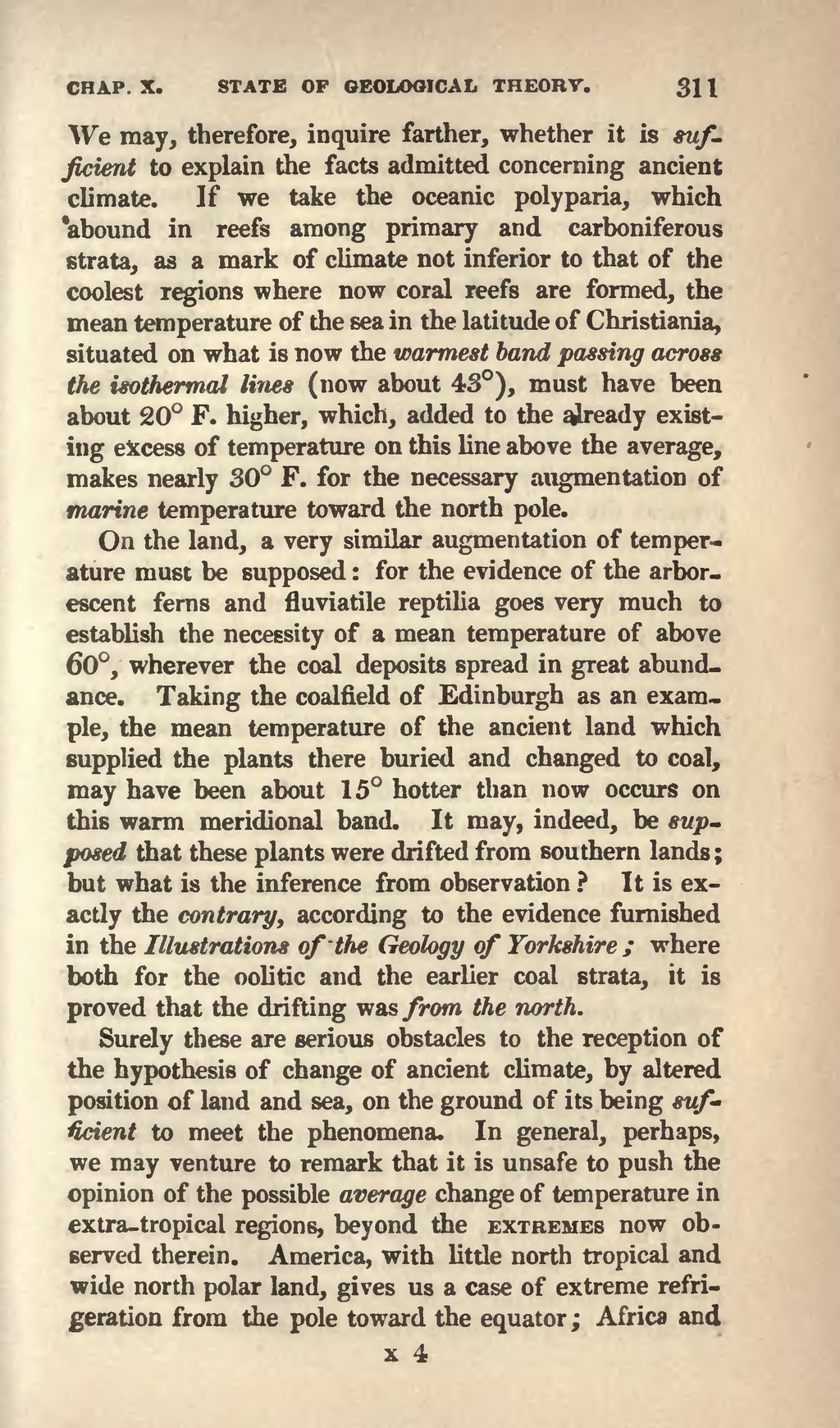We may, therefore, inquire farther, whether it is sufficient to explain the facts admitted concerning ancient climate. If we take the oceanic polyp aria, which abound in reefs among primary and carboniferous strata, as a mark of climate not inferior to that of the coolest regions where now coral reefs are formed, the mean temperature of the sea in the latitude of Christiania, situated on what is now the warmest band passing across the isothermal lines (now about 43°), must have been about 20° F. higher, which, added to the Already existing excess of temperature on this line above the average, makes nearly 30° F. for the necessary augmentation of marine temperature toward the north pole.
On the land, a very similar augmentation of temperature must be supposed: for the evidence of the arborescent ferns and fluviatile reptilia goes very much to establish the necessity of a mean temperature of above 60°, wherever the coal deposits spread in great abundance. Taking the coalfield of Edinburgh as an example, the mean temperature of the ancient land which supplied the plants there buried and changed to coal, may have been about 15° hotter than now occurs on this warm meridional band. It may, indeed, be supposed that these plants were drifted from southern lands; but what is the inference from observation? It is exactly the contrary, according to the evidence furnished in the Illustrations of the Geology of Yorkshire; where both for the oolitic and the earlier coal strata, it is proved that the drifting was from the north.
Surely these are serious obstacles to the reception of the hypothesis of change of ancient climate, by altered position of land and sea, on the ground of its being sufficient to meet the phenomena. In general, perhaps, we may venture to remark that it is unsafe to push the opinion of the possible average change of temperature in extra-tropical regions, beyond the extremes now observed therein. America, with little north tropical and wide north polar land, gives us a case of extreme refrigeration from the pole toward the equator; Africa and
